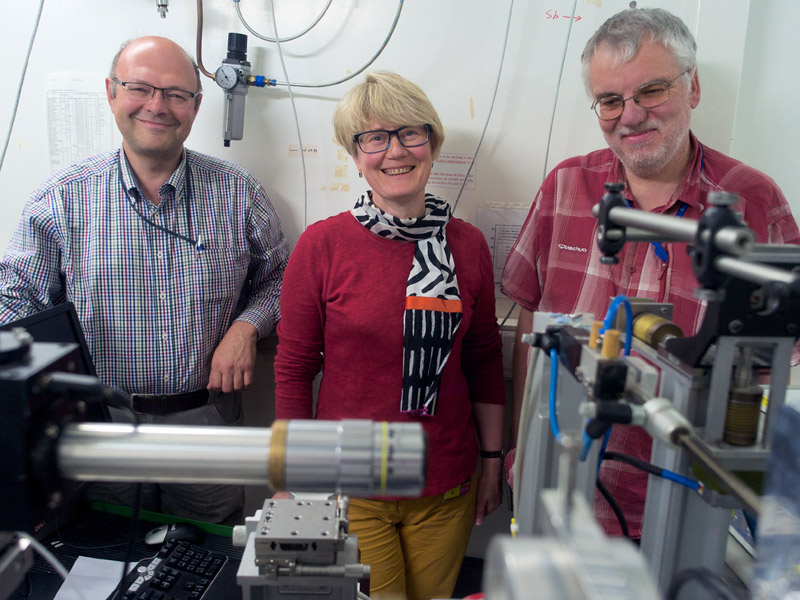- Home
- News
- General News
- Royal Swedish Academy...
Royal Swedish Academy of Sciences awards extreme-conditions users
26-09-2016
Leonid Dubrovinsky and Natalia Dubrovinskaia, long-standing high-pressure users of the ESRF, have been awarded the Gregori Aminoff Prize, given by the Royal Swedish Academy of Sciences.
They know the ESRF like the back of their hand. Leonid Dubrovinsky and Natalia Dubrovinskaia, both at the University of Bayreuth (Germany), have been regular users at the high-pressure and other beamlines since the early days of the facility. Their research has also featured in highly-ranked journals and has provided the ESRF with outstanding stories on matter at extreme conditions, be it the development of new material or new insights on what goes on deep down inside the Earth.
With such a high profile, it is hardly a surprise that they are the recipients of the prestigious Gregori Aminoff Prize in Crystallography 2017, “for having developed new methodology for in situ-experimental determination of crystal structures subjected to extreme conditions of high temperature and pressure”. The beamlines at the ESRF that are most important for the crystallographic results, for which the award is given, are ID09, BM01 (SNBL), and ID27. But the scientists have also worked on ID06, ID11, ID18, ID24 and BM23.
The researchers, who are also a couple, acknowledge the importance of the ESRF in their research: “For us, this prize is a recognition of the importance of what we are doing and we know that without the ESRF’s support it would not be possible”, says Leonid Dubrovinsky.
 |
|
Leonid Dubrovinsky, Natalia Dubrovinskaia and Michael Hanfland, from the ESRF, on ID09, one of the beamlines they use regularly. |
The Gregori Aminoff Prize is intended to reward a documented, individual contribution in the field of crystallography, including areas concerned with the dynamics of the formation and dissolution of crystal structures.
http://www.kva.se/en/pressroom/2016/gregori-aminoff-prize-2017/



